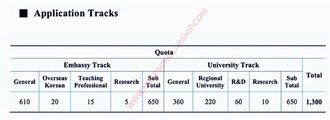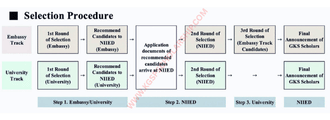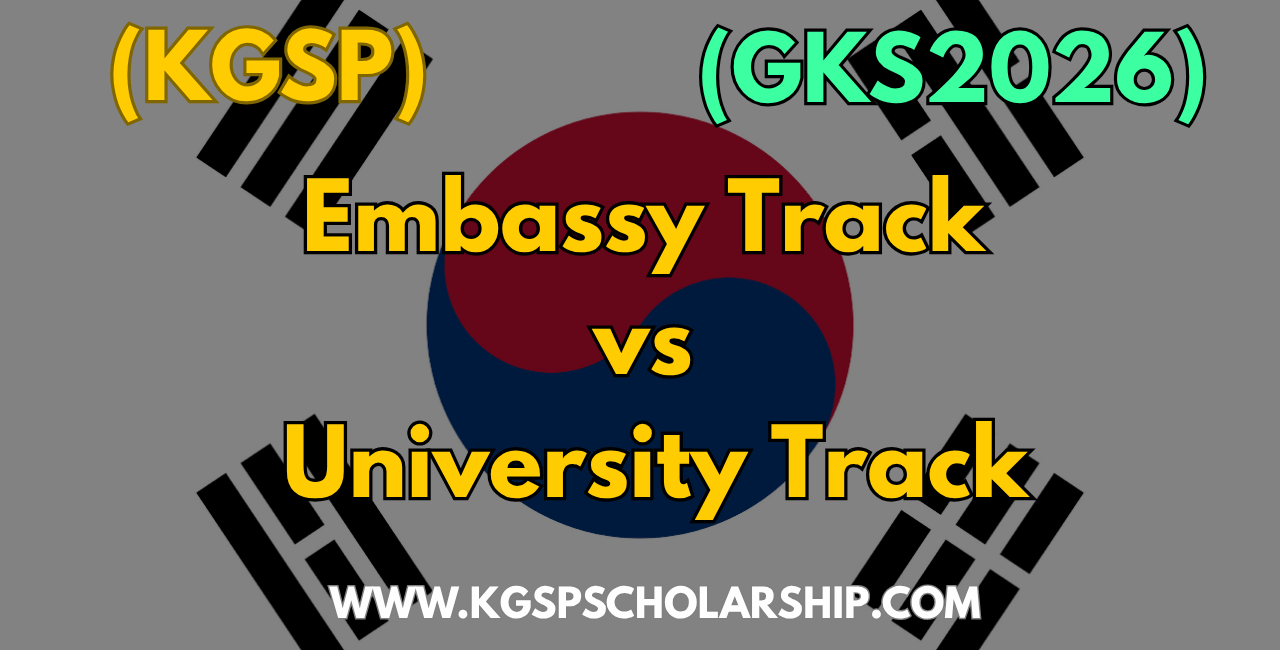The Global Korea Scholarship (GKS) also called the Korean Government Scholarship Program (KGSP). It is a top chance for international students to study in South Korea for free. Unlike other scholarships the GKS has two ways to apply the Embassy Track and the University Track. Each has its own steps deadlines and spots. Picking the best track depends on your study plans favorite schools and benefits which we will look at next.
In this post we will take a close look at the Global Korea Scholarship (GKS). We will cover four main points: (1) the difference between the Embassy Track and the University Track, (2) how many spots are available for each, (3) how the application process works for both, and (4) tips on picking the right track for your needs.
1. Difference Between the Embassy Track and the University Track
The Global Korea Scholarship (GKS) (KGSP) lets you apply two different ways: through an embassy or directly through a university. Both give you the same scholarship benefits but work differently.
Embassy Track
Application Process
- First apply at the Korean embassy in your country
- If shortlisted your application goes to NIIED for review
- Final candidates apply to universities
About Universities
- Can choose up to 3 universities
- Must get accepted by at least 1
University Track
Application Process
- Apply directly to 1 participating university
- The university sends top applications to NIIED
About Universities
- Can only apply to 1 university
- Must get accepted by that university
Which One To Choose?
- Embassy Track is better if you want more university options
- University Track is simpler if you already know which school you want
2. GKS Scholarship (KGSP) Slots: Embassy vs University Track

When applying for the (KGSP) GKS scholarship you should know that the number of available spots changes based on two things:
- Which application track you choose (Embassy or University)
- Which country you’re from
The total number of scholarships stays about the same each year but how they divide these spots between countries and tracks can really affect your chances.
Recent Numbers
- In 2023 about 1,300 students got the scholarship
- The spots were split almost evenly between both tracks
- Before this more spots went to the University Track
Country-Specific Slots (2023 Example)
| Country | Embassy Track | University Track |
| Pakistan | 5 | 7 |
| India | 22 | 25 |
| Indonesia | 27 | 42 |
| Nigeria | 6 | 11 |
| USA | 14 | 2 |
Important Note
The Korean government decides these numbers each year. They can change even if more or fewer people apply. Always check the latest official information before you apply.
3. Application Process: University Track vs Embassy Track

Embassy Track (3 Steps)
This way lets you apply to 3 universities, giving you better chances.
Step 1: Apply at Your Local Embassy
- First send your application to the Korean Embassy in your country
- They pick candidates based on available spots and competition
- Smaller countries sometimes have better chances
Step 2: NIIED Review
- The embassy sends good applications to NIIED
- NIIED checks your grades and potential
- Not everyone who passes the embassy round gets through
Step 3: University Acceptance
- Your application goes to your 3 chosen universities
- Some schools might interview you
- At least 1 university must accept you
Remember: The exact steps and dates can be different in each country. Check with your embassy for details.
University Track (2 Steps)
This way is faster but more competitive. You can only pick 1 university.
Step 1: Apply Directly to University
- Send your application straight to a (KGSP) GKS university
- Schools often have early deadlines
- You’re competing against students worldwide
- Most universities will interview you
Step 2: Final NIIED Approval
- The university sends their best candidates to NIIED
- NIIED makes the final choice based on country quotas
- If too many students from your country are picked, NIIED decides who gets it
Important: Each university has different rules. Pay close attention to their requirements and deadlines.
Which is better?
Embassy Track = More university options
University Track = Faster process if you know your top school
4. Embassy Track vs University Track: How to Choose
There’s no “best” option—it depends on your goals and situation. Here’s how to decide which track fits you better:
Pick the University Track if…
- You already know which university you want
- Your dream program is at that school
- You’re applying for a PhD (direct professor contact helps)
- You’re confident you can meet that university’s high standards
Pick the Embassy Track if…
- Your grades or profile aren’t perfect (you get 3 tries)
- You’re okay with multiple university options
- You want better odds by applying to several schools
Smart Tip:
If choosing Embassy Track, include at least 1 less competitive university to boost your chances!
Final Advice
Think about:
- Your academic strengths
- How prepared you are
- Which universities match your goals
Both tracks work—choose what fits YOUR path.
Always check the latest updates on the Study in Korea website before applying.
